While visiting the bookstore recently, I spotted an intriguing needlework title that caught my attention. Needle Lace Flowers, by Figen Cakir, is all about the art of oya, or the making of Turkish needle lace. According to Figen, oya is short for igne oyasi (pronounced eeneh-oyasi), which loosely translates to mean “to embellish, to craft something that takes time.”
Oya, a form of intricate crochet that often involves the use of a short sewing needle, thread and knotting, has been around for centuries. It likely dates back to the days of the Ottoman Empire (1300-1900), when it was common for the arts to be emphasized in architecture, home decorating, textiles and literature. The center of decorative arts was in Anatolia, otherwise known as Asian Turkey. Today women in Anatolia and throughout Turkish villages still practice oya as a way to decorate scarves and headgear, to trim items for a bride’s trousseau, and to create beautiful fiber art jewelry. On Etsy, you can see beautiful examples of what some call the most difficult form of needlework in the world. If you click on any of the images in this post, you’ll be taken directly to the shops of the needleworkers.
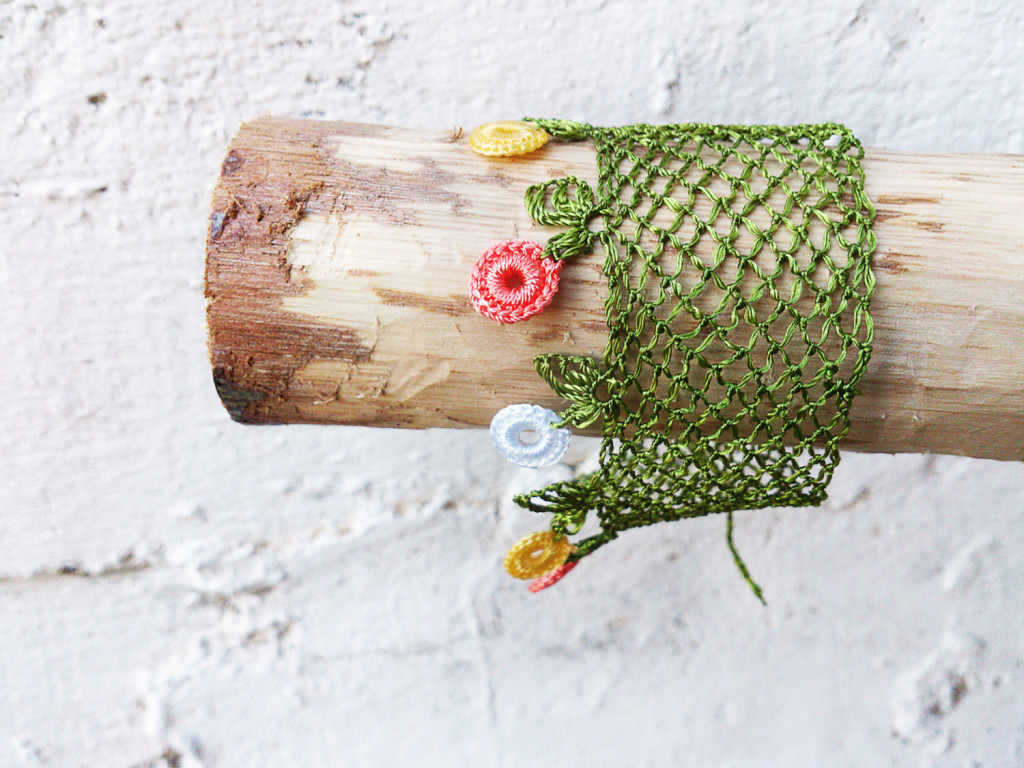
The author of Needle Lace Flowers spent her childhood summers in Istanbul, where her maternal relatives lived and where she was exposed to shopkeepers and flower sellers who wound scarves about their heads, embellished with amazingly colorful and detailed trims that looked like real flowers. This was Figen’s introduction to oya, but it was not until she became an adult that she dared to learn the art herself. She learned from Turkish housewives in her neighborhood, and her first attempts looked nothing like the work her tutors produced. She persisted in her efforts to learn the art of oya, however, and today can make flowers and leaves with a fair amount of skill.
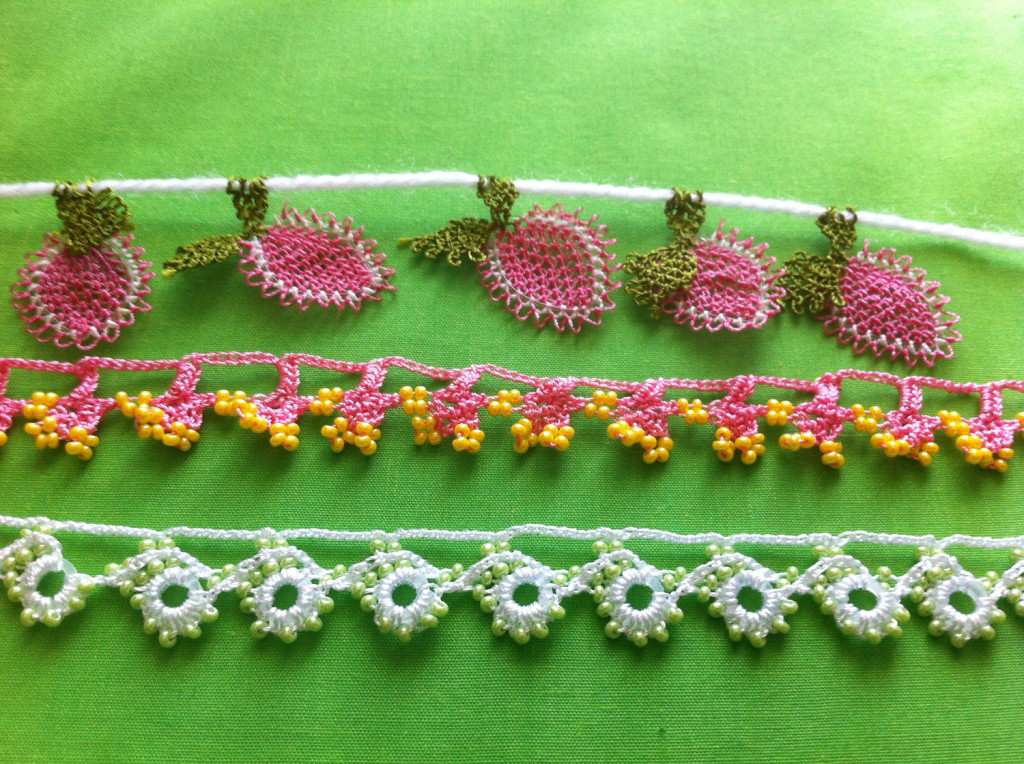
Although oya today is more decorative than anything else, once upon a time when women were expected to be silent about their feelings, it carried the weight of a secret language. “Of all the traditional needlecrafts,” says Figen, “oya is probably the most ‘vocal.'” Each oya motif has a specific emotional message or meaning. For example, a new bride who was unhappy with her mother-in-law might wear a headscarf trimmed with gravestone motifs.
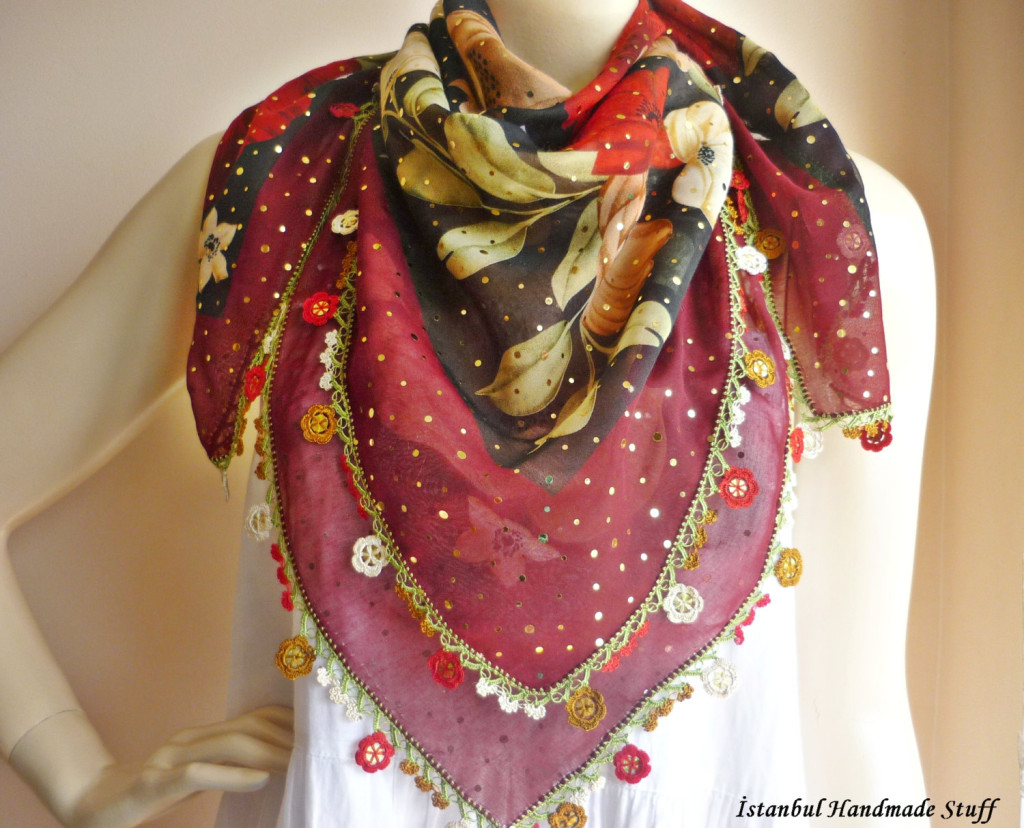
In Turkey, oya needle lace is made almost everywhere, and the tools used to make it differ from village to village. Sometimes fine crochet hooks are used, but it is not unusual to see needle lace made with round bone or wooden shuttles. Traditionally, oya was made using silk thread, but today it is more common to use more readily-available cotton thread, especially a number five perle cotton.
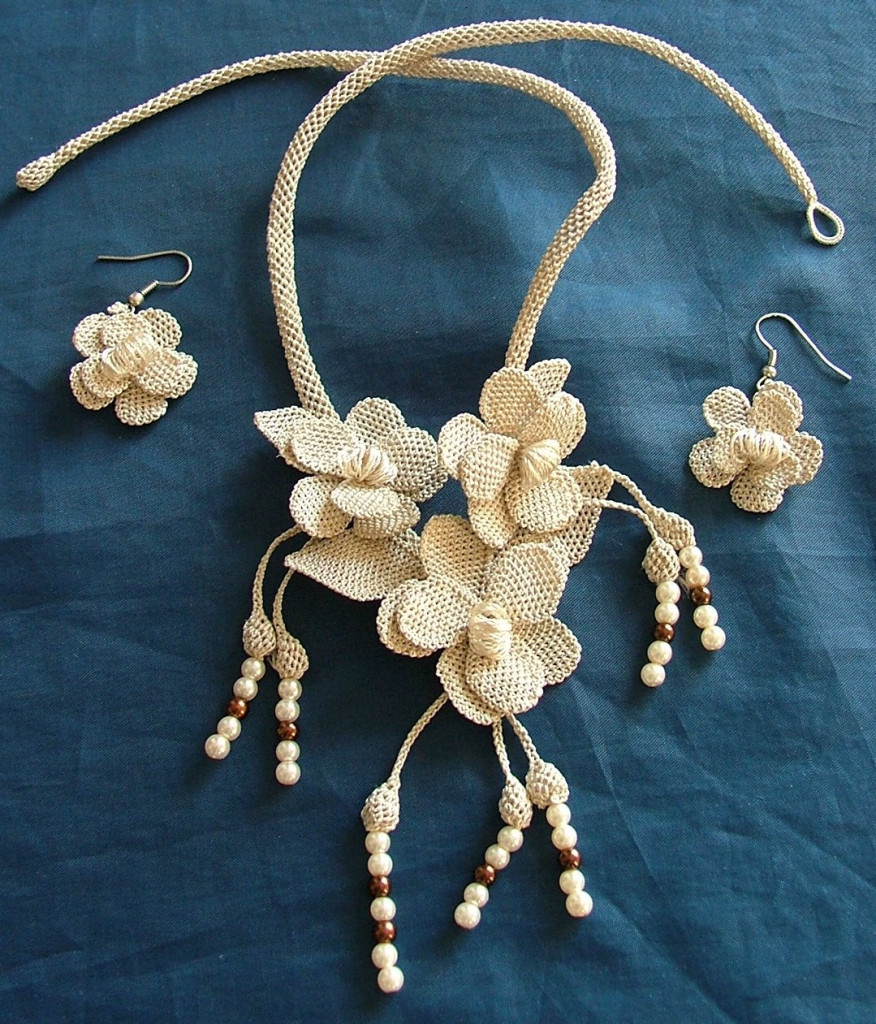
Oya is worked from left to right, whether you are left- or right-handed. You’ll work with open and closed loops, seed knots, picots, double picots, triple picots and long loops. Like every other needle art that I know, it has its own technical language. Figen’s book, Needle Lace Flowers, provides you with clear diagrams that all begin with what is called a three-loop base. She warns you that in the beginning you should not attempt a project, but instead practice some basic techniques. To encourage you to keep working at your craft until you get it right, the book is peppered with truly awe-inspiring photographs of completed oya projects. If you are familiar with thread crochet or some other form of lace-making, you may catch on to the art of oya a little more easily than if you are not, says Figen, but practice breeds both familiarity and ease, and you’ll discover your own shortcuts.
The projects in Needle Lace Flowers were all made by two of Figen’s friends, Nermin Buyukkorkmaz and Sibel Kucek. Sibel has a blog devoted to the art of oya. Whether you decide to attempt learning this amazing craft or not, you may wish to view her natured-inspired creations on her blog, located at http://sibelincicekleri.wordpress.com. Although I’m no stranger to thread crochet, I am not sure if I will ever learn this form of needlework, but I certainly can and will continue to admire the results!
© 2014 Judy Nolan. All rights reserved.

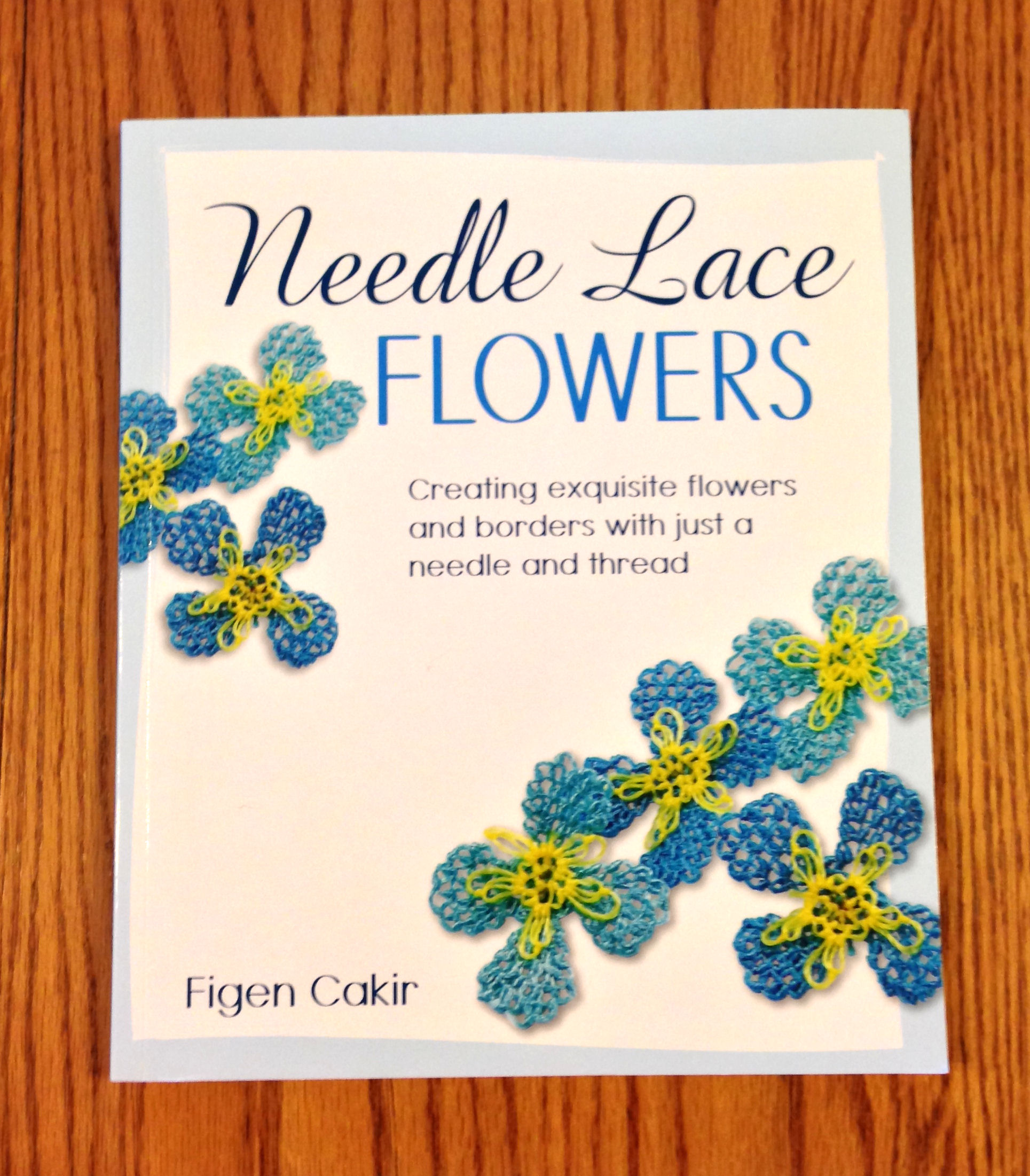
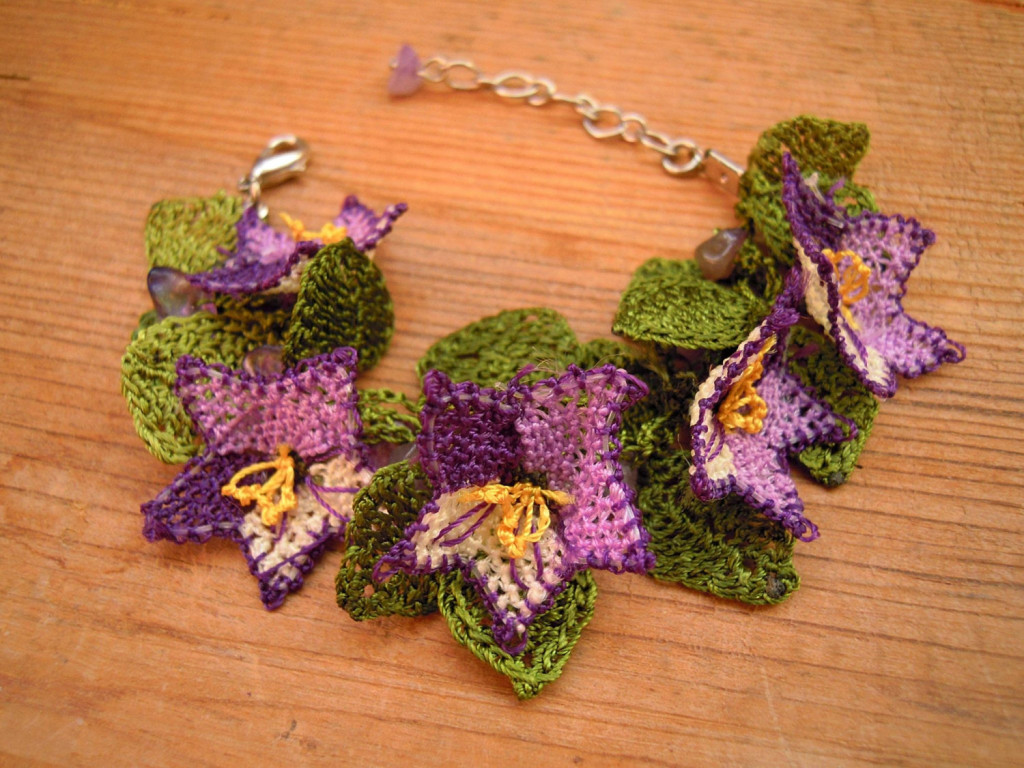
wow! This is such a beautiful art form! Thanks for sharing, Judy!
Beautiful!! Exquisite detail! I had never heard of this technique!
Thank ‘you for sharing this wonderful needlework! I would love to get my hands on that book!
Thank you, Judy, for such a lovely review of the book! I’m sorry I saw your article so late but it made my day. Thank you!
Hello I would like to learn how to do oya, but never use the needle, would u mind to teach me from beginning how to use this needle
Emi, oya is an art I would love to learn myself. My post is a recommendation of a book that will teach you the step-by-step process. If you cannot get hold of the book, you can instead visit http://oya.spitzenkiste.de/00_Einfuehrung_en.html to learn how to do oya.